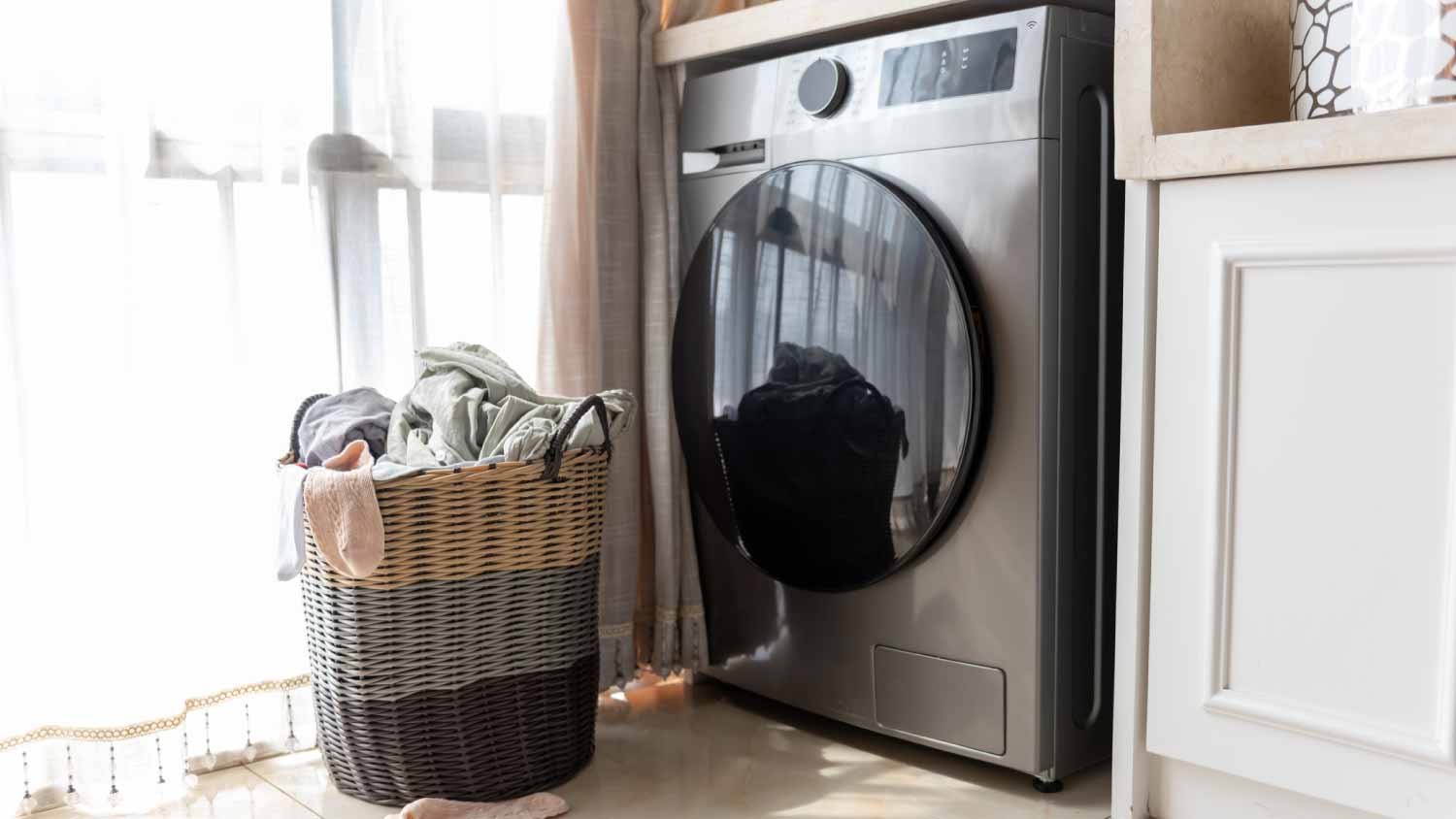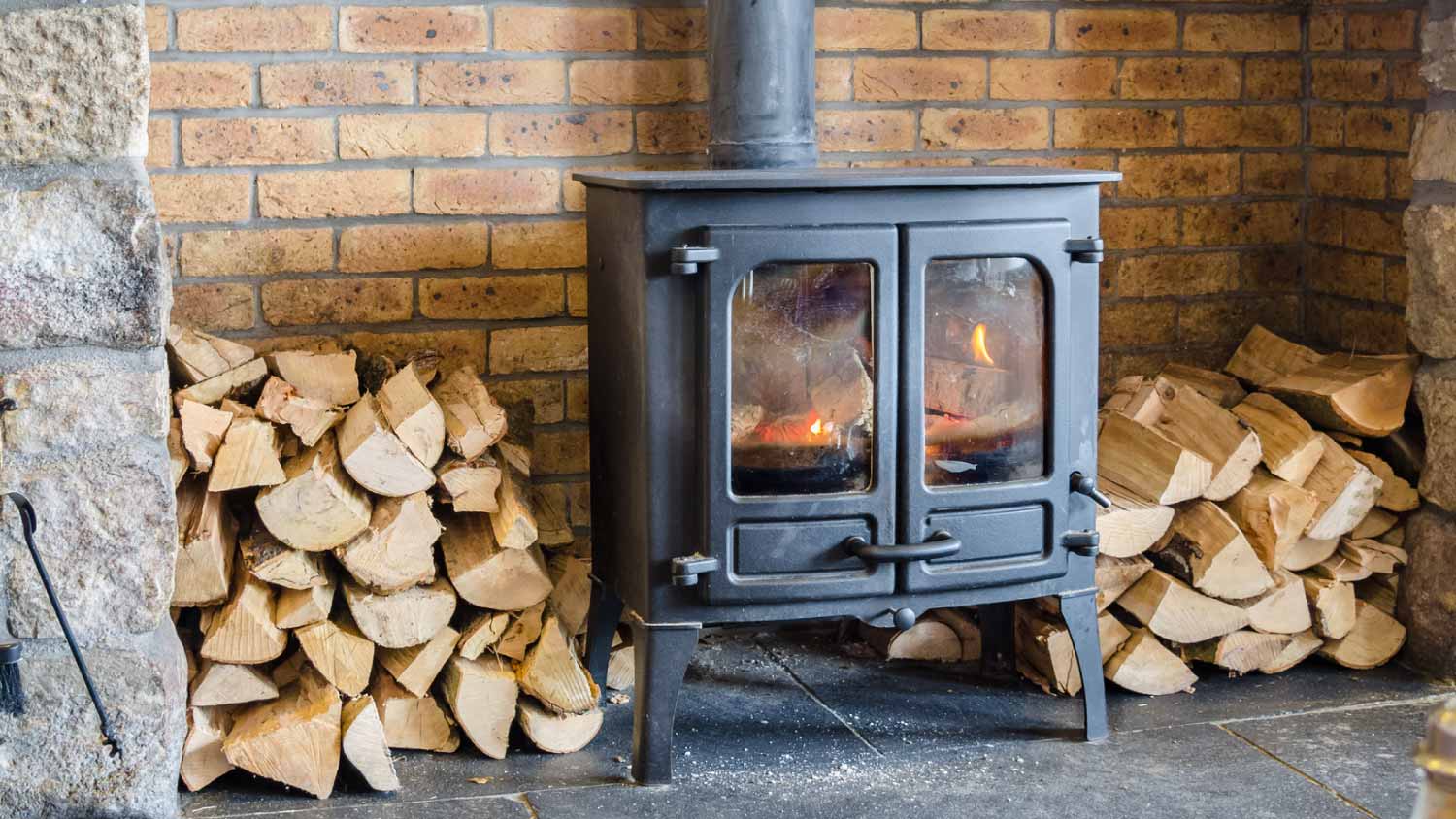Why Is My Freezer Frosting Up? Here Are 10 Common Reasons and Solutions
You don’t have to tolerate annoying freezer frost


A lot of frost buildup may not mean the freezer is broken.
Keep warm air out of the freezer to limit frost buildup.
Pack the freezer full—but not stuffed—to avoid frost.
A steady temperature keeps freezer frost at bay.
Seeing a collection of ice and frost in your freezer is frustrating. It’s hard to restock a freezer around an uneven frost buildup, and it may indicate that your appliance is wasting energy. So why is your freezer frosting up? Freezer frosting happens when warm air gets trapped inside your freezer, turning into frozen droplets. This can be due to many issues, such as failing to fully close your freezer door, improper sealing, incorrect food storage, and more.
1. Humid Air Enters the Freezer and Causes Frost

When your freezer is frosting up, the cause is warm, humid air from your home entering the freezer’s compartment with its sub-freezing temperatures. The moisture in the humid air freezes, causing icy frost to build up on the surfaces inside the freezer. To fix this issue, try:
Making sure the door closes each time. A slightly ajar freezer door will cause frost and result in all the items inside thawing.
Avoiding opening the door unnecessarily. Try to figure out what you need from the freezer before opening the door. Even keeping the door open several seconds longer than necessary per day will cause the freezer to frost up significantly more quickly.
Organizing the freezer items. A highly organized freezer compartment will help you find the item you want faster.
2. A Failing Seal Bringing In Warm Air
Freezers have a seal or gasket where the closed door and compartment meet that aims to prevent air exchange from the freezer and your home. If this seal is not tight, warm air may seep into the freezer compartment slowly over several weeks, eventually causing a buildup of frost on the freezer’s surfaces. To fix this issue, try:
Inspecting the gasket. If it’s damaged or loose, it could explain why your freezer is not freezing or is frosting up excessively.
Cleaning the seal. If the seal has grime or pet fur on it, it may not completely seal the compartment.
3. Avoid Storing Hot or Moist Food in the Freezer

When you place packages of hot food in the freezer, this can cause the freezer’s surfaces to frost up. Any warm, moist air that the food releases into the freezer could adhere to a surface and create an icy frost. To fix this issue, try:
Cooling food before freezing. If you cook food that you want to freeze, allow it to cool in the refrigerator before placing it in the freezer.
Sealing containers tightly. If you must place warm food in the freezer, make sure you seal it as tightly as possible in containers before freezing it.
Wiping off excess moisture. If some of the frozen items you brought home from the store partially defrosted and now have moisture on the outside, wipe this moisture away before placing the items in the freezer.
4. A Faulty Defrost System
Some newer freezers have an automatic defrost mode, which can remove excess frost for you. However, if any aspect of the defrost system is not working, such as a faulty thermostat or timer, this could cause frost to build up unexpectedly. To fix this issue, try:
Checking the defrost timer. You might need to specify certain times when the freezer will run in defrost mode. The freezer’s user guide should help with this process.
Seeking repair. You may want to call a local freezer repair company to inspect the defrost system to determine whether it needs repair.
5. Fluctuating Temperatures in the Freezer

Manufacturers typically recommend setting the freezer temperature at 0 degrees Fahrenheit and leaving it there. If temperatures inside the compartment fluctuate quite a bit, or if they are consistently warmer than the recommendation, you may see a quick buildup of frost. To fix this issue, try:
Setting and measuring the temperature. Set the freezer's thermostat to 0 degrees and use a thermometer to measure it occasionally, ensuring it remains at a constant temperature.
Calling for repairs. If the thermostat is not holding the temperature or if you are wondering why the fridge is not cold but the freezer is one day, and then the opposite problem occurs the following day, call for local refrigerator repair. The average appliance repair cost is about $175, which is far less than losing a freezer and refrigerator full of food to spoilage from a broken appliance.
6. Too Little Food in the Freezer
When you have a relatively full freezer—but not one crammed with food—the appliance can more easily maintain a consistent temperature. With already-frozen items taking up most of the space inside the freezer compartment, temperatures rarely fluctuate. Having a full freezer also leaves less room for warm air from the house to enter the freezer compartment.
So, how much food do you need in the freezer to prevent frost buildup? The best configuration is to leave about an inch of free space between any food stored in the compartment and the exterior walls and ceiling of the freezer while filling most of the rest of the compartment with food.
7. Too Close to Other Appliances
Although your freezer’s design keeps items cold, other kitchen appliances, like an oven or dishwasher, work to heat items.
Avoid placing the freezer too close to any of these types of appliances. The heat they create may affect the ability of the freezer’s compressor to dissipate heat generated from the freezer’s operation into the room. If the compressor is not working efficiently, you likely will notice significant frost buildup inside the unit.
If you choose to place your freezer in a basement or garage, make sure it isn’t adjacent to heat-generating appliances commonly found in these areas, like a water heater, furnace, wood-burning stove, or washer and dryer.
8. Too Close to the Wall
Freezers and refrigerators need free space around them for air circulation that allows efficient operation. Without enough clearance and air movement, the freezer’s compressor can’t properly dissipate heat, failing to keep the compartment at a consistent temperature and leading to frost buildup.
Leave a couple of inches between the back of the freezer and the wall to allow for adequate airflow. Also, make sure there’s a gap between the top and sides of the appliance and any cabinets. The more free space for air circulation that’s available, the more efficiently the compressor will run.
9. Too Close to Windows
Placing a freezer near a window could lead to operational issues that create extra frost inside the compartment.
If sunlight coming through the window directly strikes the freezer for a few hours each day, it may heat up the exterior of the appliance. This causes the freezer’s compressor to struggle to dissipate heat properly, resulting in a buildup of frost.
Additionally, if your windows have poor insulation, they could allow cold air to seep indoors near the freezer in winter. This can cause uneven compressor performance, potentially increasing the frost inside the appliance.
10. Evaporator Fan Not Working
Freezers use an evaporator fan to circulate air inside the appliance’s compartment, which delivers a consistent interior temperature. However, this fan can break down over time or become caked with ice, preventing the fan blades from turning properly. This leads to uneven temperatures inside the freezer compartment, which results in significant frost buildup.
In addition to seeing excess frost, if you have an evaporator fan problem, you may hear significant noise or notice vibrations from the freezer as the malfunctioning fan tries to run. To fix this issue, try:
Checking the fan for ice. The fan usually is behind a panel on the interior of the freezer. Unplug the appliance, move food and shelves out of the way, and remove the panel. Remove any ice from the blades to see if that fixes the problem.
Call for repairs. If you don’t see caked-on ice or if the fan simply doesn’t seem to be spinning properly, replacing it is your best option. A local freezer repair person can do this job for you.
Repairing vs. Replacing the Freezer
If you're having consistent issues with an older freezer, it may be time to upgrade to a replacement instead of risking sinking more money into repairs. Generally, replacing a freezer when the repair cost totals half of the replacement cost is a cost-effective strategy. Age is also a factor. Consider investing in a new freezer that is experiencing ongoing issues if the unit is more than five or six years old. The average freezer life span is 12 to 20 years old.
Who Do You Contact to Fix Your Freezer?
A local freezer repair service should be able to take a look at your freezer to provide a diagnosis and estimate for work. With many freezers being covered by warranties, it's important to hire a licensed appliance repair expert who fixes freezers instead of a handyman to ensure that you don't void your warranty. Warranty concern is another reason why you might want to avoid DIY freezer repair. If a freezer frosting up is caused by a minor issue, the repair tech may be able to fix the problem during the initial visit. However, it may be necessary to order a replacement part directly from your refrigerator manufacturer.



.jpg?impolicy=leadImage)

- Appliance Repair Companies
- Washing Machine Repair
- Dryer Repair
- Refrigerator Repair
- Dishwasher Repair
- Oven Repair
- Wood & Pellet Stove Repair
- Freezer Repair Services
- Wood Stove Services
- Gas Stove Repair
- Emergency Appliance Repair Companies
- Ice Maker Repair
- Gas Appliance Repair
- GE Appliance Repair
- GE Refrigerator Repair
- GE Dryer Repair
- GE Dishwasher Repair
- GE Washing Machine Repair
- Samsung Appliance Repair
- Samsung Refrigerator Repair
- Samsung Dryer Repair
- Samsung Washer Repair
- Samsung Dishwasher Repair
- Samsung Oven Repair
- Whirlpool Repair
- Whirlpool Refrigerator Repair
- Whirlpool Washer Repair
- Whirlpool Dryer Repair
- Whirlpool Oven Repair
- Maytag Appliance Repair
- Maytag Refrigerator Repair
- Maytag Washer Repair
- Maytag Dryer Repair
- Maytag Dishwasher Repair
- Kitchenaid Appliance Repair
- Kitchenaid Oven Repair
- Kitchenaid Refrigerator Repair
- Kenmore Appliance Repair
- Kenmore Dishwasher Repair
- Kenmore Washer Repair
- Kenmore Dryer Repair
- LG Refrigerator Repair
- Bosch Appliance Repair
- Kenmore Refrigerator Repair
- LG Appliance Repair Services
- GE Microwave Repair
- Electrolux Appliance Repair
- Electrolux Washer Repair
- Kitchenaid Dishwasher Repair Services
- Wood Stove Inspection
- Dishwasher Installation
- Trash Compactor Repair
- Why Your Freezer Is Not Freezing: 8 Potential Causes & Solutions
- Who Fixes Freezers? Who to Call to Fix the Freezer
- 9 Reasons Why Your Freezer Is Leaking (and How to Fix It)
- What Is the Ideal Freezer Temperature?
- Parts of a Freezer: What They Do and When to Repair Them
- What Is a Garage-Ready Freezer?
- 10 Steps to a Well-Maintained Fridge and Freezer
- Freezer vs. Deep Freezer: Key Features, Differences, and Pros and Cons
- Why Is My Fridge Leaking?
- 16 Tips for Storing Bulk Foods and Other Goods















